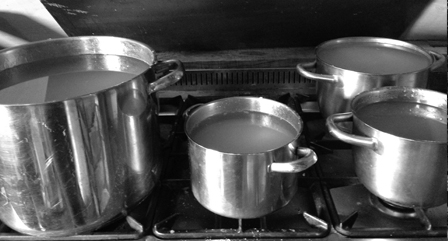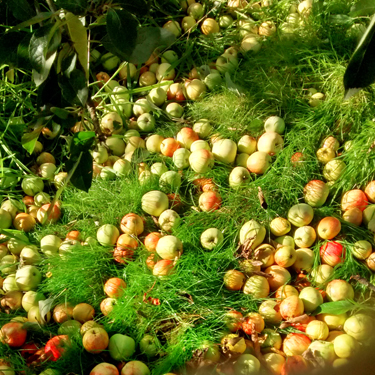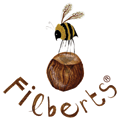The weather remained reasonable this year and hive populations stayed high late into the season. So, with plenty of late forage, the bees needed feeding in late September and early October.
Although there are many schools of thought regarding feeding, we use sugar syrup to help bees through the colder months, preventing starvation. Some choose to feed back honey, which runs the risk of spreading disease. The apiary sites were also condensed just before feeding to prepare them for winter. Some sites are rather vulnerable to the cold and wet conditions during winter. Others see a great deal of activity (such as apple harvesting), so hives are given a nice sheltered spot until numbers start picking up again.

Gently heating sugar and water, before dispensing into containers, cooling and placing in ‘feeders’ on the top of hives.

The majority of our apiary sites cover cider apple orchards from April until June, on pollination duties. They are vital to a good fruit yield and at this time of year, while the bees rest, the results of their industry carpet the ground, ripe and ready for harvesting and pressing, setting a new rhythm with a new season. Above are the ‘Majors’ basking in the Autumn sun.

We’ve seen great yields this year at Twinways Orchard thanks to our busy bees and a serious spot of winter pruning. Each of these baskets contains 400kg – 500kg of fruit. Each press takes 800kg – 1000kg of fruit and produces approximately 500 litres of juice.
- April – Busy Planting! - 3rd May 2024
- March – Changing Seasons - 17th April 2024
- February – Everything’s waking up - 29th February 2024
